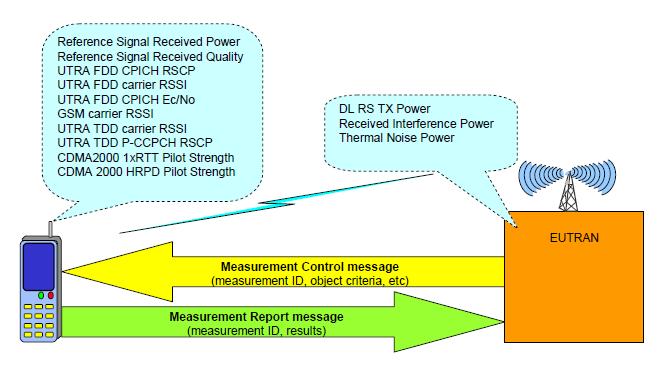Handover principles
Lossless
Packets are forwarded from the source to the target.
Network-controlled
Target cell is selected by the network, not by the UE.
Handover control in E-UTRAN (not in packet core).
UE-assisted
Measurements are made and reported by the UE to the network.
Late path switch
Only once the handover is successful, the packet core is involved.
Handover measurements
The eNodeB sends Measurement control messages to the UE giving reporting thresholds. The UE identifies others cell ids from synchronization signals and measures other cells’ signal strength based on their RS. When the reporting threshold condition is fulfilled, the UE sends handover measurement reports to the serving eNodeB.
LTE UE can detect intra LTE neighbors without neighbor lists which simplifies network management. The UE reports other cell IDs to the eNodeB. If the target cell ID is known by eNodeB, it will proceed with the handover. If the target is not known by eNodeB and no is X2 enabled, the eNodeB asks UE to decode global cell id of the target cell.
 The eNodeB finds out the target cell’s IP address from O&M, enables an X2 connection to the target cell and proceeds with the handover 2G network operators need to define neighbor lists towards LTE. Also 3G network operators need to define the neighbor lists but it is possible for UE to detect the new cells outside neighbor list which makes neighbor list creation simpler.
The eNodeB finds out the target cell’s IP address from O&M, enables an X2 connection to the target cell and proceeds with the handover 2G network operators need to define neighbor lists towards LTE. Also 3G network operators need to define the neighbor lists but it is possible for UE to detect the new cells outside neighbor list which makes neighbor list creation simpler.